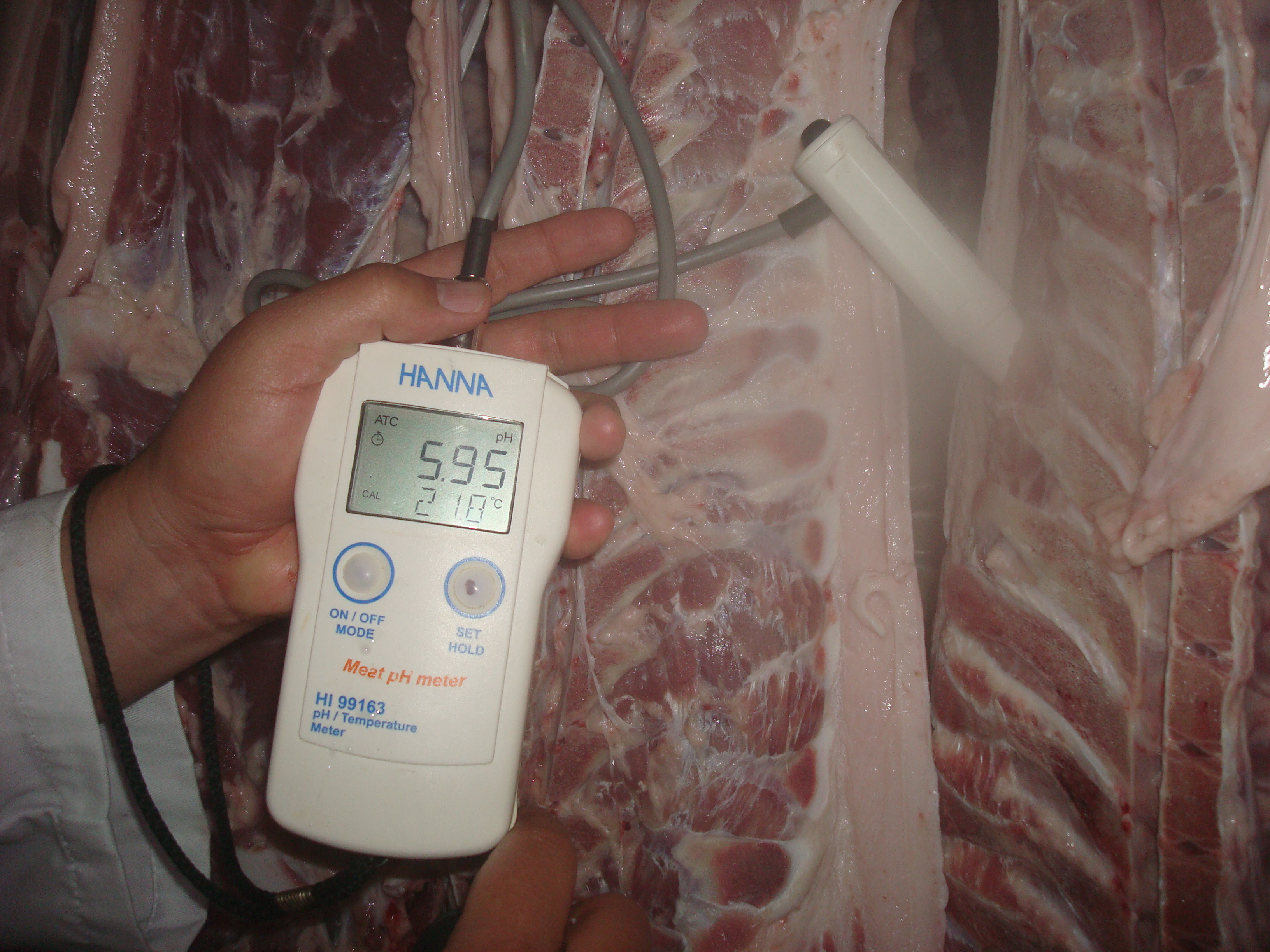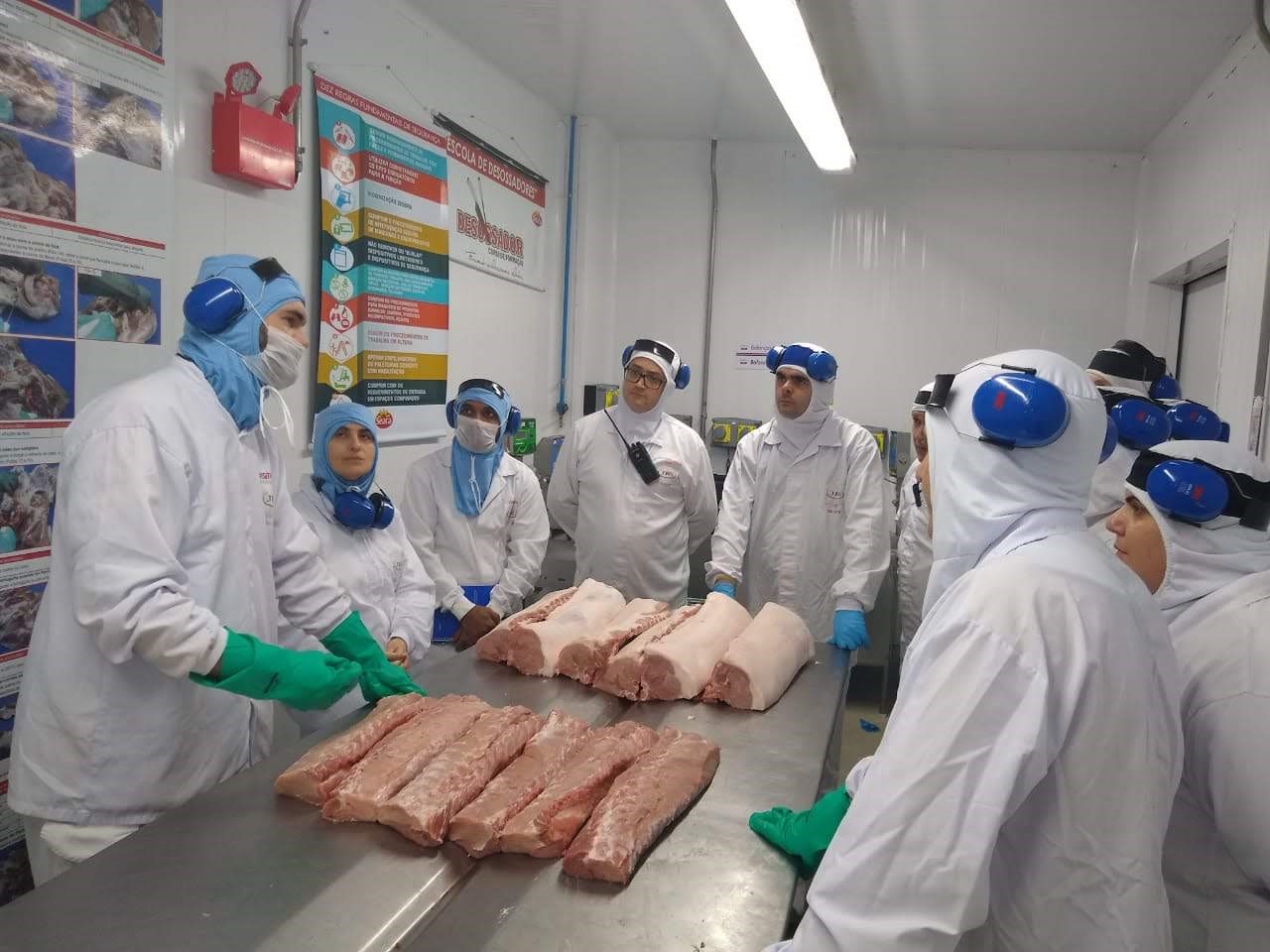



Building the blueprints for meat quality
The Pig Site speaks to meat quality expert, Brandon Fields, about the key factors influencing pork quality and how consumer eating habits are shaping meat science.
© PIC
No two days are the same for Brandon Fields, applied meat science manager with PIC. As a genetics company, PIC is expected to produce pigs that perform at certain levels with regards to health, growth and performance, and lean content. Simultaneously, the meat from those pigs is expected to meet certain standards of quality and, as a meat scientist, Brandon is responsible for realising that genetic potential.
Brandon explains that his role primarily includes monitoring and investigating each potential environmental factor that could influence – either positively or negatively – final meat quality, and working closely with customers and the packing industry as a whole, to help them optimise the genetic potential that is being created in the pigs.
We asked Brandon a few questions about the key factors influencing meat quality from both an environmental and genetic perspective, and explore how consumer eating habits are shaping meat science.
What are the major environmental factors influencing meat quality?
In my opinion, there are two major causes for poor meat quality: one is poor welfare and handling up until the point of slaughter, and the other is the chilling post-harvest.
Stress and optimal pH
Ultimately, muscles continually metabolise energy stores through normal aerobic metabolism; life continues; everything remains within this homeostatic, stable condition, with a pH residing around neutral (pH 7 to 7.2).
When we stress an animal that is used to a fairly sedentary lifestyle, its muscles fatigue and there is a build-up of lactic acid. Right in those last 5-10 minutes prior to harvest, if the animal is stressed, it’s building up high concentrations of that lactic acid in the muscle too late to metabolise it. This results in a rapid, pH decline which can produce PSE (pale soft exudative) meat.
Obviously, slaughter is never going to be 100 percent stress-free but we can minimise that stress through gentle, careful handling and movement.
We can also look at other aspects of the slaughter facility that can be altered to provide a calmer environment: we can provide good lighting; we can ensure pigs don’t have to move through 90-degree corners; and we can ensure staff move in a calm, quiet fashion. Some of the newer designs and equipment allow group movement which aligns more closely with how pigs would naturally move around.
There has also been plenty of research investigating the impacts of the type of stunning used on meat quality. It has been shown that a higher rate of blood splashing occurs with electrical stunning in comparison to CO2 stunning, and many studies have shown lower cortisol levels during gas stunning as opposed to electrical.
Essentially, welfare, stress and meat quality are directly correlated but regardless of the output, good welfare should be the top priority at any point in the meat production chain.

© PIC
The chill factor
The impact of chilling on meat quality is basic biology: chilling directly alters the rate and extent of pH decline, the colour, and the water holding capacity of meat.
The quicker the chill, the better, regardless of how well we do things on the front end [prior to harvest and at harvest].
Once we have exsanguinated that pig, the muscle is continuing to metabolise stored glycogen and is therefore producing an anaerobic by-product, lactic acid. This lowers pH. The key is to control both the rate and extent of the pH decline through chilling. This will slow the enzymatic process and produce less lactic acid, thus maintaining a higher pH (better quality). Our general targets for quality are:
- Within an hour we want to achieve an internal temperature of 32°C.
- Within four hours we want to achieve 13°C.
- For food safety, a carcass shouldn’t be cut above 5°C.
Obviously, there are different regulations in other countries, mostly dependent on the required lifespan of the product. Meat going to wet markets needs only a short shelf-life whereas cuts that need a longer lifespan need to be kept closer to zero degrees.
How does the desired end-product determine genetic development in breeding pigs?
There are many different genetic lines of pigs, with different characteristics that fit different markets.
Case study: European processed meats
In Germany, 80 to 90 percent of the pork consumed there is sausage or some type of further processed product.
For these products, lean meat is ground and flavoured and smoked so there is less concern for the intrinsic taste component of the pork produced from that genetic line of pigs.
Case study: Asian whole-muscle cuts
The other extreme would be the taste markets in Japan and Korea. 70 percent of their pork is consumed as fresh meat or whole-muscle cuts, for example, pork chops and the cuts used for shabu shabu. Shabu shabu pork, in particular, has to have a good firmness and water holding capacity in order to be sliced as thinly as is required for that style of cooking.
For general consumption
If we’re just talking about satisfying those general eating qualities for pork chops to be sold in the US and Europe, for example, we’re looking at the genetic potential to have a good pH, to be as resistant to stress as possible and, more recently, we’ve been looking deeper into tenderness qualities, including Warner-Bratzler shear force into the selection objectives..
We’ve been measuring pH and introducing such selection factors into our genetic lines for 20 years. In certain PIC lines, for example our Duroc, the PIC 800, we’ve been selecting for marbling – higher intramuscular fat content – for the last 12-13 years.
Everything leads to one question: what is the potential quality for the end use? If you don’t focus on the end use, and the consumer needs and wants, you’re not going to be in business for a very long time.

© PIC
How do changes in consumer eating patterns affect your genetic strategy?
Over time we have seen some swings. In the late 1990s and into the 2000s there was a health kick and a real push for low-fat, lean meat. From mid-2016 perhaps, there came the consensus that fat isn’t so bad anymore. Fat also has more flavour.
This opinion change has led to moving away from extremely lean pork to cuts with some fat and marbling.
With this change, we have managed to develop genetic methods of controlling fat percentage and where that fat is laid down, to an extent. Genetically speaking, we’re able to increase intramuscular fat whilst holding back fat constant.
This said we can’t change on a dime. The typical flow of our work means that, at best, we will be three to five years down the line before the consumer will experience any genetic changes that we have made.
We really have to keep our crystal ball well-shined and keep a check on where the numbers are pointing in order to stay with the flow of consumer trends.
What are some of the key questions you hope to answer through your research in coming years?
What are the full costs and benefits of pushing market hog weights up to the 140kg to 150kg mark and beyond?
How can we ensure the grading of pork quality is more objective and consistent?
Why do we see variation in pork quality if all of the genetic and environmental conditions are the same?
How do we provide a more consistent, predictable and desirable experience to consumers?
We’ve also been working on a tenderness programme and I’m hoping that through more data and more of a focus on consumer experience, we can determine how to achieve a consistently “tender” piece of pork.









